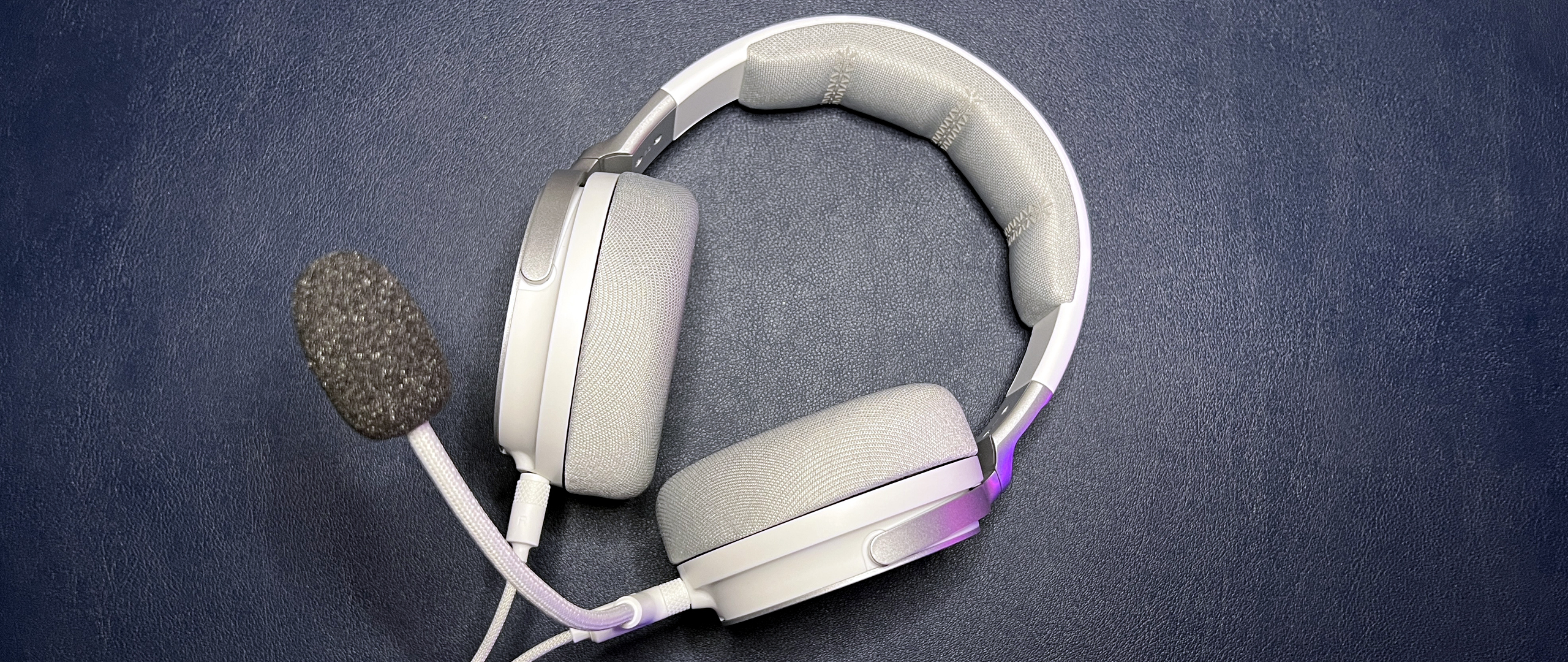Tom's Hardware Verdict
The Virtuoso Pro sounds better than other headsets in its price range, but it doesn’t look like it belongs in the Virtuoso line.
Pros
- +
Open-back design
- +
Lightweight, comfortable
- +
Rigid travel case fits headset and accessories
Cons
- -
Looks and feels kind of cheap
- -
Open-back design feels somewhat closed
- -
Detaching boom mic means swapping audio cables
Why you can trust Tom's Hardware
Corsair’s Virtuoso line has held rank on our list of best gaming headsets (and our list of best wireless gaming headsets) for some time now — it’s hard to beat the line’s combination of high-quality audio, premium build, and, of course, gamer-oriented features. But Corsair is taking the Virtuoso line in a new direction with its latest addition: the Corsair Virtuoso Pro.
The Virtuoso Pro is an analog, wired headset with an open-back design — very different from its predecessors. There aren’t a ton of open-back gaming headsets on the market, mostly because the majority of people shopping for gaming headsets (or any headsets) are looking to contain their sound. But there are some, including the Audeze LCD-GX and the Drop + Epos PC38X. With its open-back design, the Virtuoso Pro sports a new overall look — one that’s much more plasticky and fabric-filled than previous headsets. It features 50mm graphene dynamic drivers and comes with two detachable audio cables — one with an inline boom mic, and one without — as well as a rigid, zippered travel case that feels pretty sturdy.
The Corsair Virtuoso Pro is available now, in black and white, and costs $199.99 — cheaper than its wireless predecessors, but expensive for a wired headset.
Specs
| Driver Type | 50mm Dynamic |
| Impedance | 32Ω |
| Frequency Response | 20 Hz - 40,000 Hz |
| Design Style | Over-ear (circumaural), open-back |
| Microphone Type | Unidirectional |
| Connectivity | Analog |
| Weight | 338g |
| Cord Length | 6.5ft / 2m, 3.5mm analog 6.5ft / 2m, 3.5mm analog (with boom mic) 9 inches / 241mm, 3.5mm y-adapter |
| Battery Life | N/A |
| Lighting | None |
| Software | N/A |
| MSRP / Price at Time of Review | $199.99 / $199.99 |
| Release Date | Sept. 19, 2023 |
Design and Comfort of the Virtuoso Pro
The Virtuoso Pro is an open-back, over-ear (circumaural) wired headset with a lightweight plastic-and-aluminum frame and detachable audio cables. It has a different look from the other headsets in the Virtuoso line — specifically, the Corsair Virtuoso RGB Wireless XT and the Corsair Virtuoso RGB Wireless SE — and not only because of the open-back design.
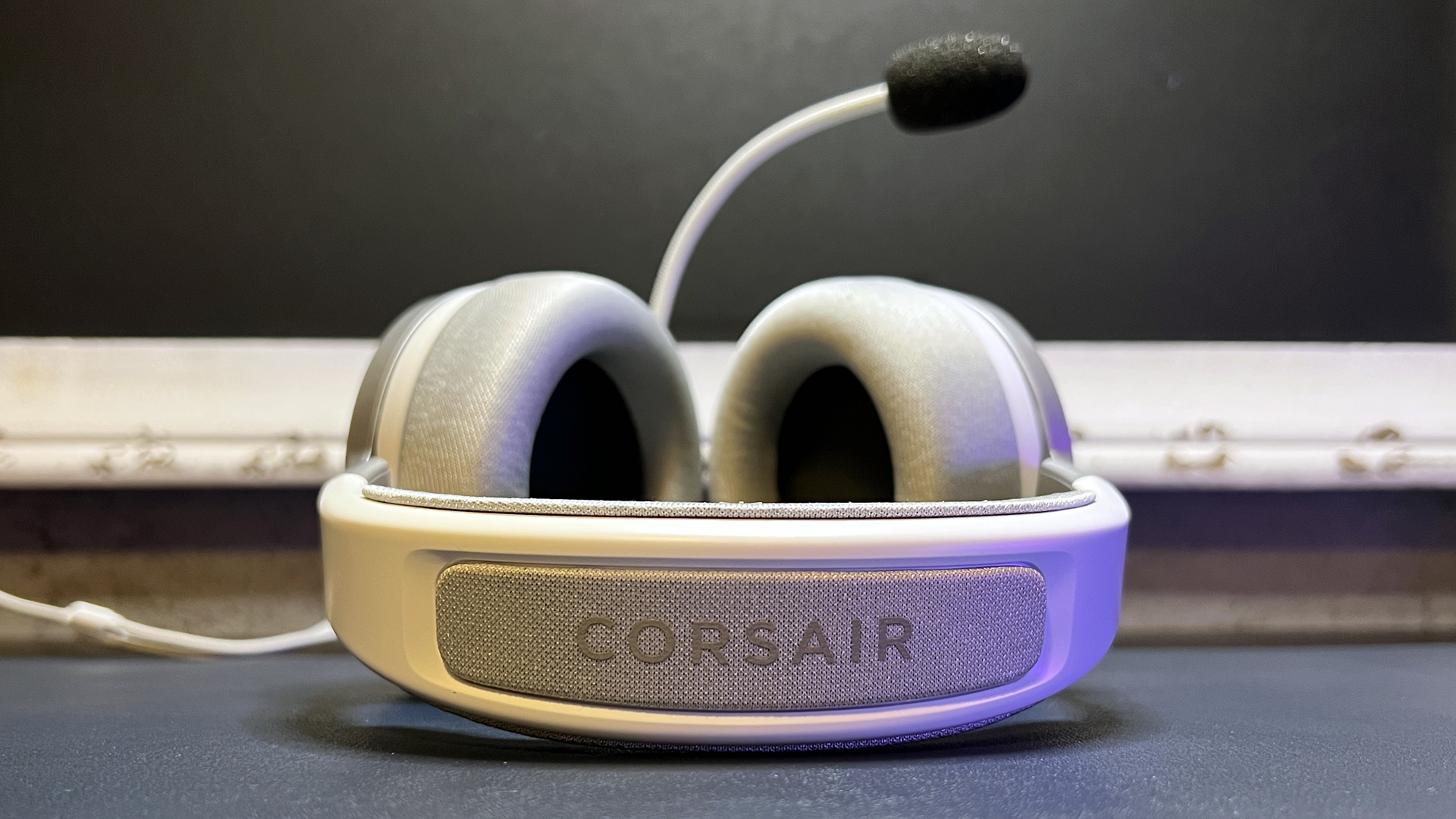
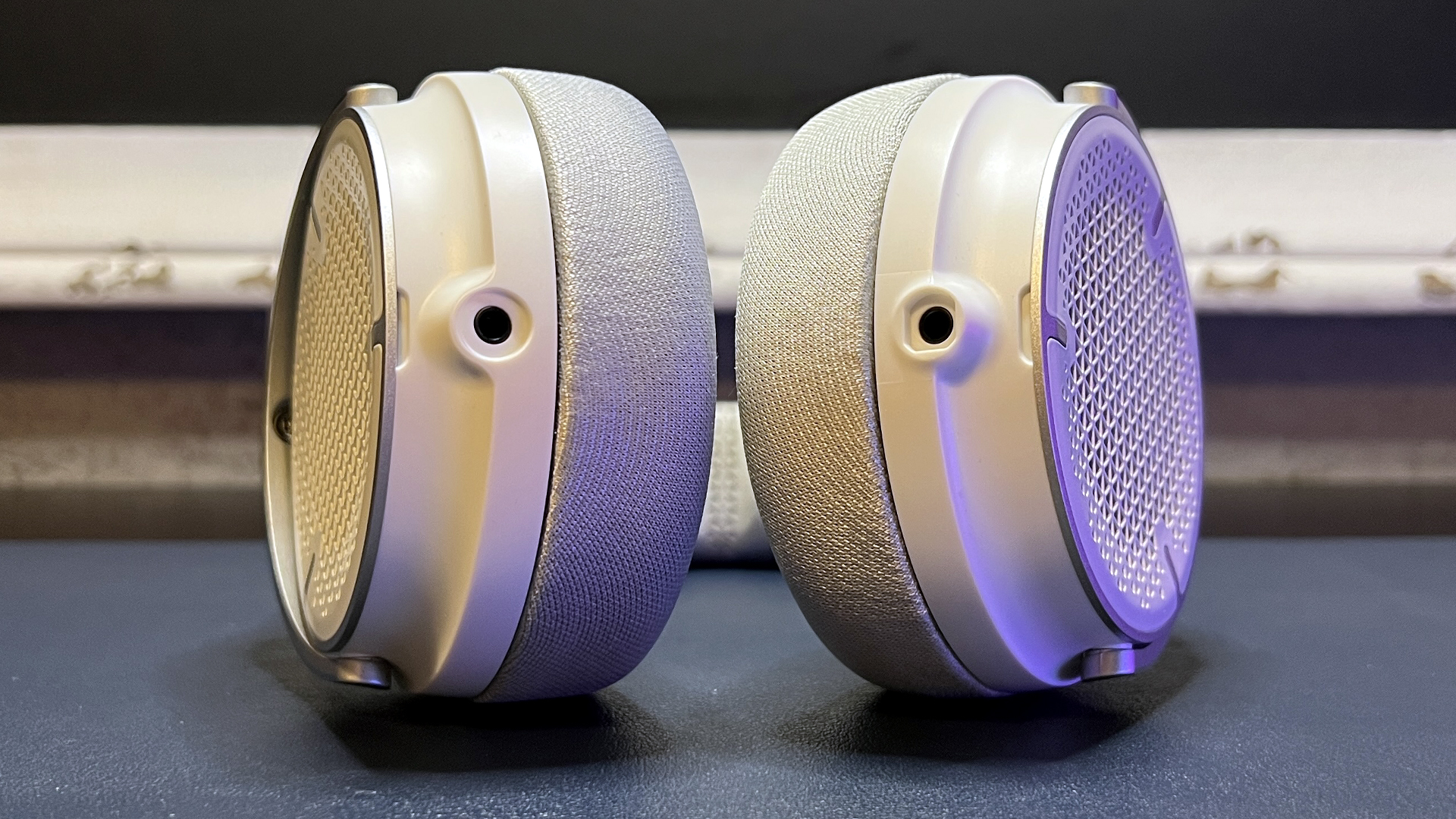
The Virtuoso Pro has large, circular earcups like its predecessors, which measure approximately 3.78 inches (96mm) in diameter and are 0.85 inches (21.5mm) thick (not including the ear pads). The earcups have metal speaker tags with a mesh triangle pattern that exposes the headset’s 50mm drivers — and gives the headset its “open-back” design. The rest of the Virtuoso Pro looks very little like its predecessors: It has redesigned, round aluminum forks that fit snugly against the earcups and a plastic-covered headband with fabric-covered padding.
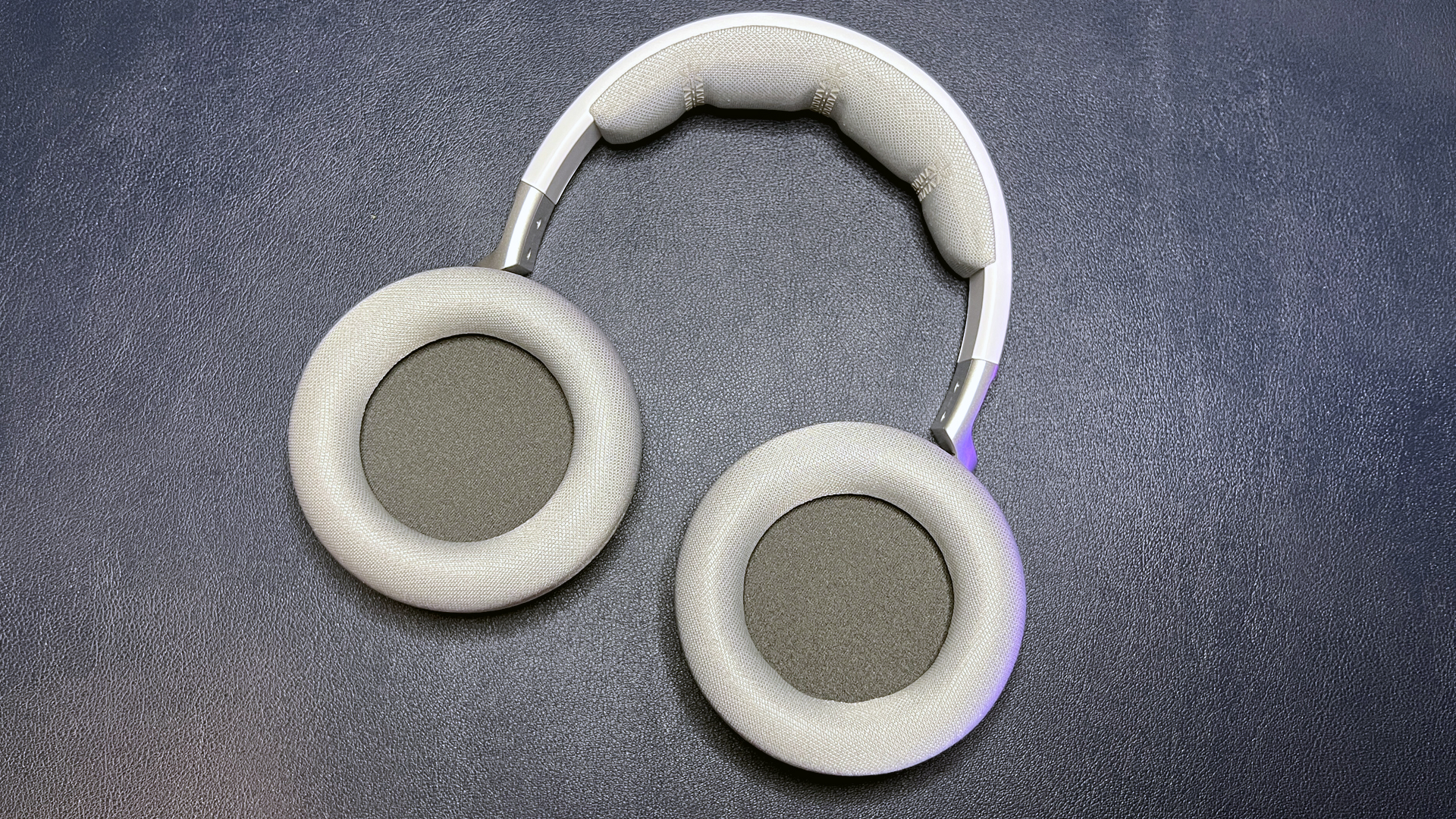
Both the Virtuoso RGB Wireless XT and the Virtuoso RGB Wireless SE have some plastic in their builds, but, for the most part, they cover it well with leatherette-wrapped headbands, aluminum joints and buckles, and attractive, brushed aluminum speaker tags. The Virtuoso Pro, by comparison, is much more...plasticky and cheap-looking. This might be partly due to color. The headset comes in both black and white colorways, and my review unit was white, which is actually a mix of white plastic, silver aluminum, and light gray fabric (the black colorway appears to be solid black). The headset has a white, plastic-covered aluminum headband with a light gray fabric-covered Corsair logo plate along the top and light gray fabric-covered memory foam padding underneath (the same material comprises the headset’s earpads).
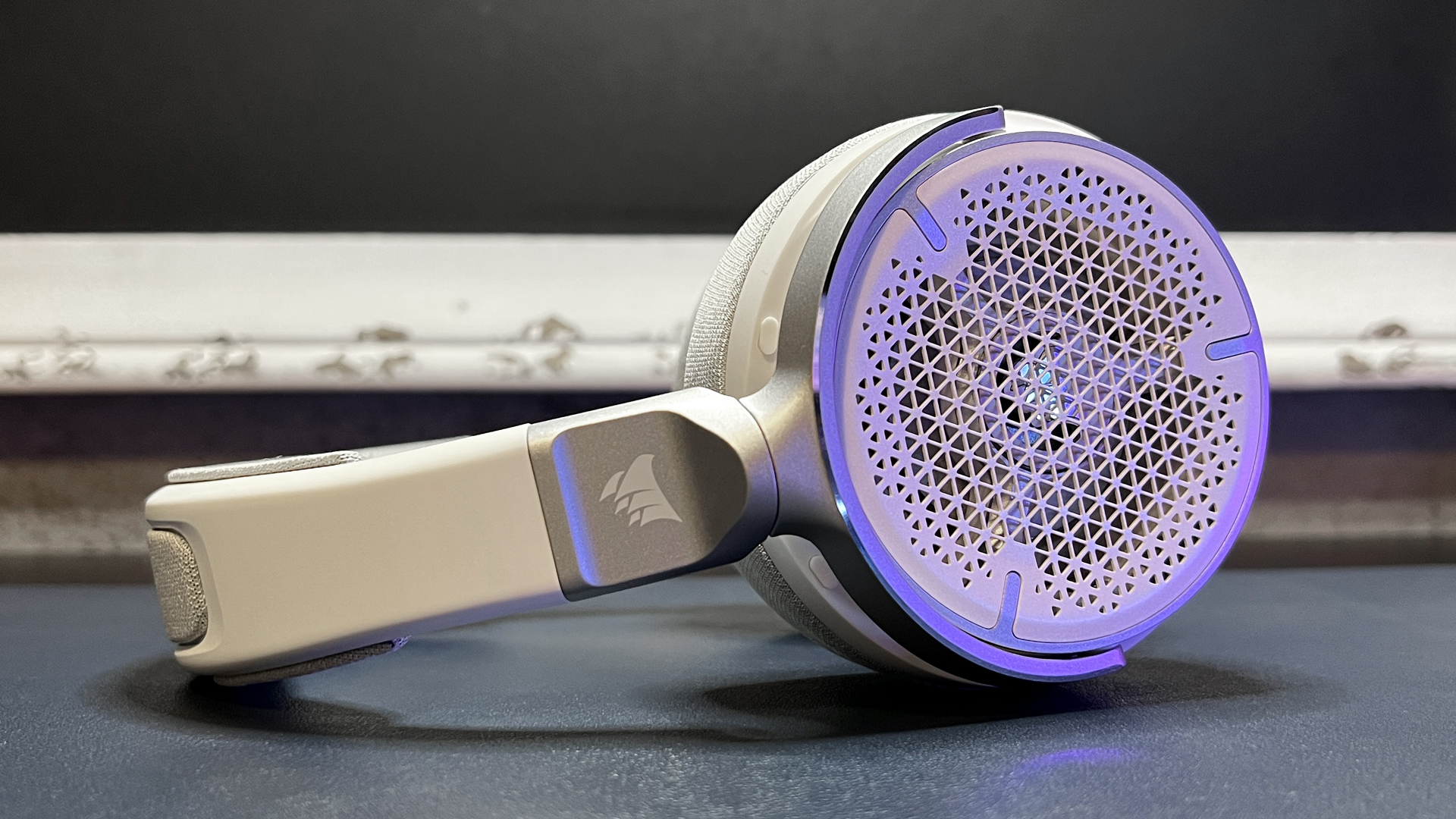
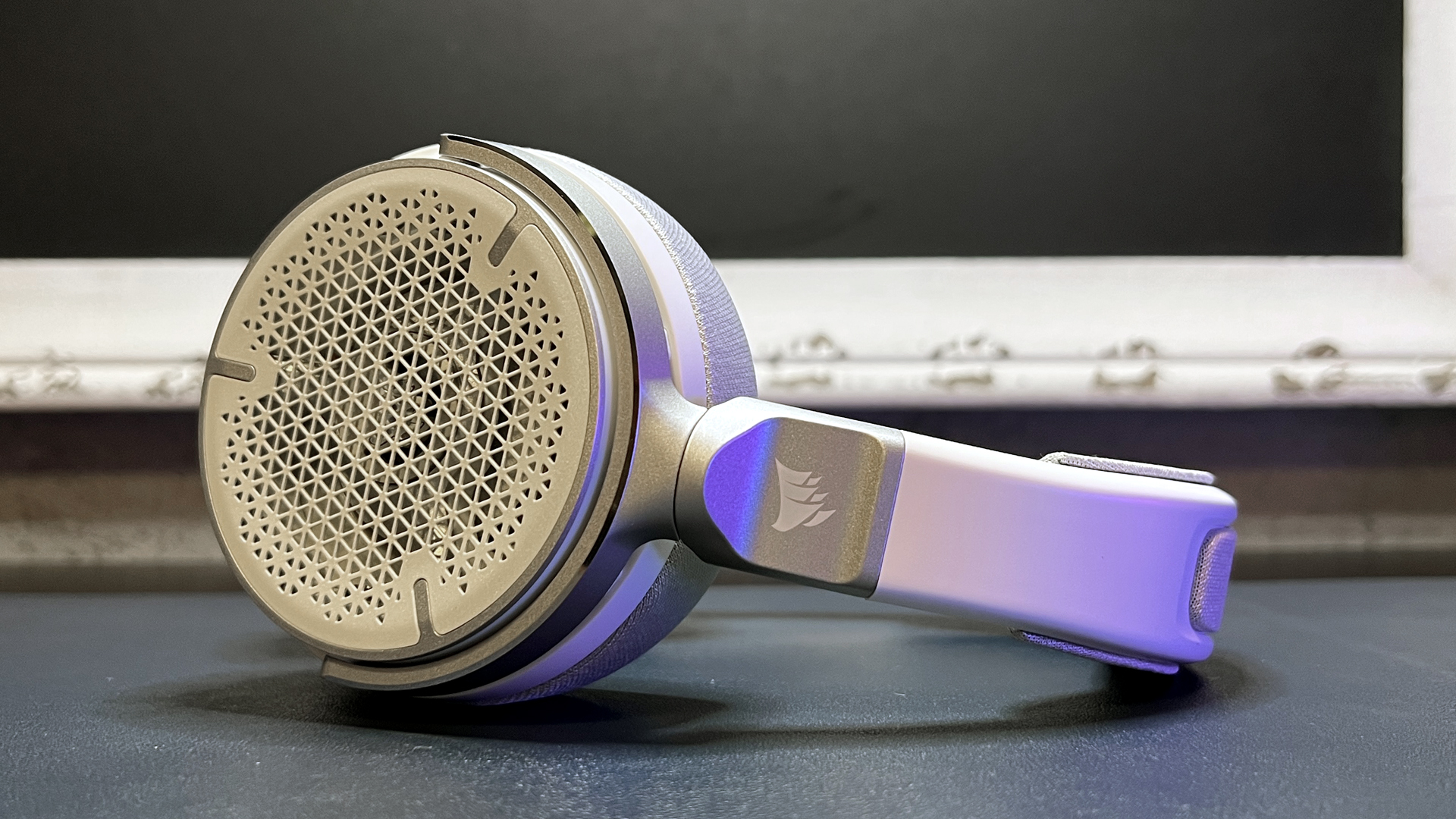
On the plus side, most of the headset’s various padding and parts are user-replaceable, including the earpads, headband padding, logo plate, and speaker tags. But I don’t love the fabric-heavy approach for comfort or aesthetics: The cheap-looking gray fabric on white plastic evokes all the luxury of a subcompact sporting the base trim level — a pretty big step down from the premium vibe of the Virtuoso RGB Wireless XT. Even the matte silver finish on the aluminum parts of the Virtuoso Pro somehow makes the headset look cheaper than it is (though there is a sliver of shiny, polished aluminum along the outer curve of each fork).
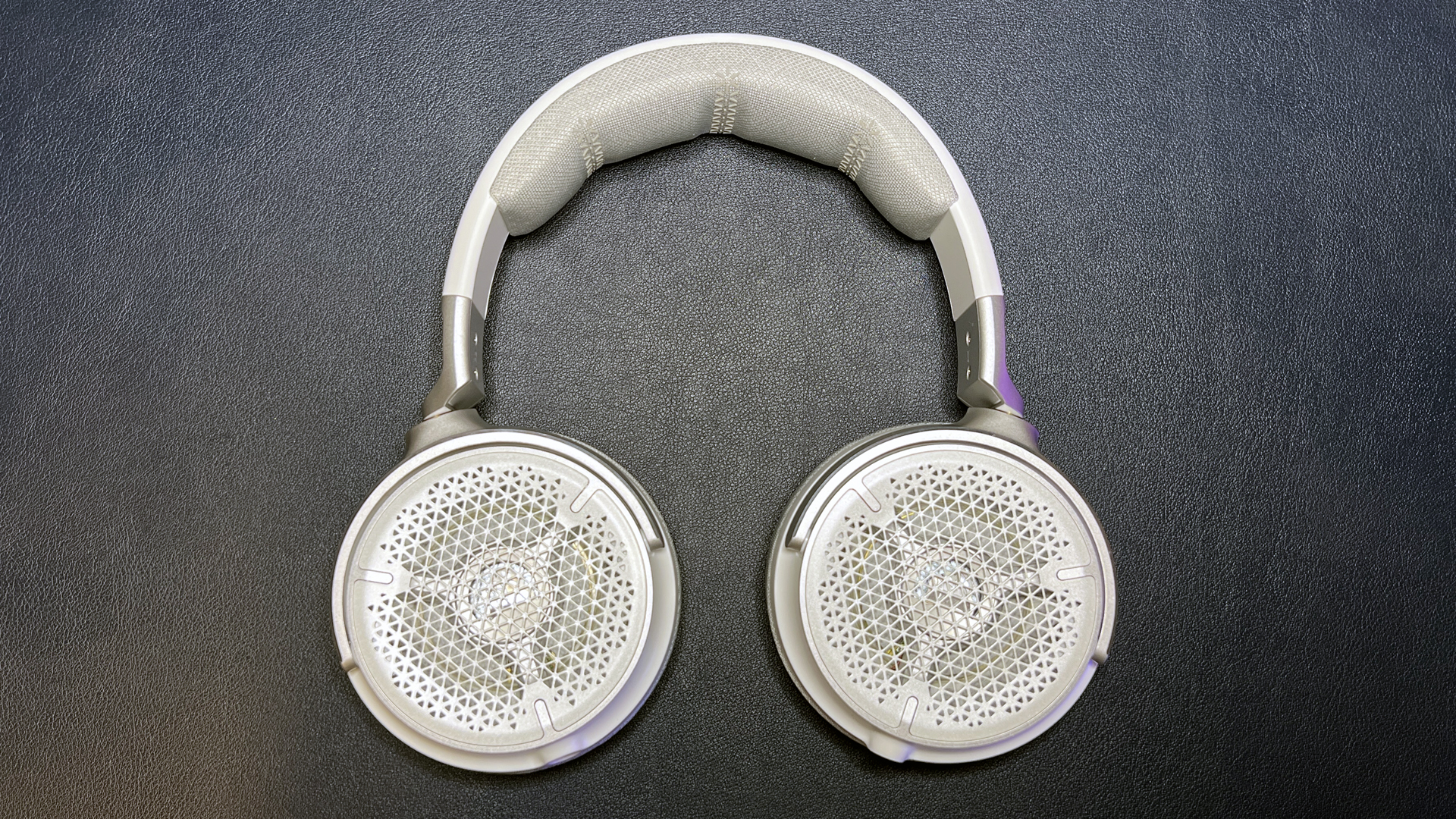

I don’t hate everything about the way the headset looks. The metal mesh speaker tags feel sturdy and have an attractive, slightly-pearlescent white finish — and their geometric cutout pattern lets you see the machined aluminum Corsair ship logo that sits atop the otherwise exposed drivers. But you only see this if you’re looking pretty closely — at a glance, the Virtuoso Pro is kind of a visual letdown.
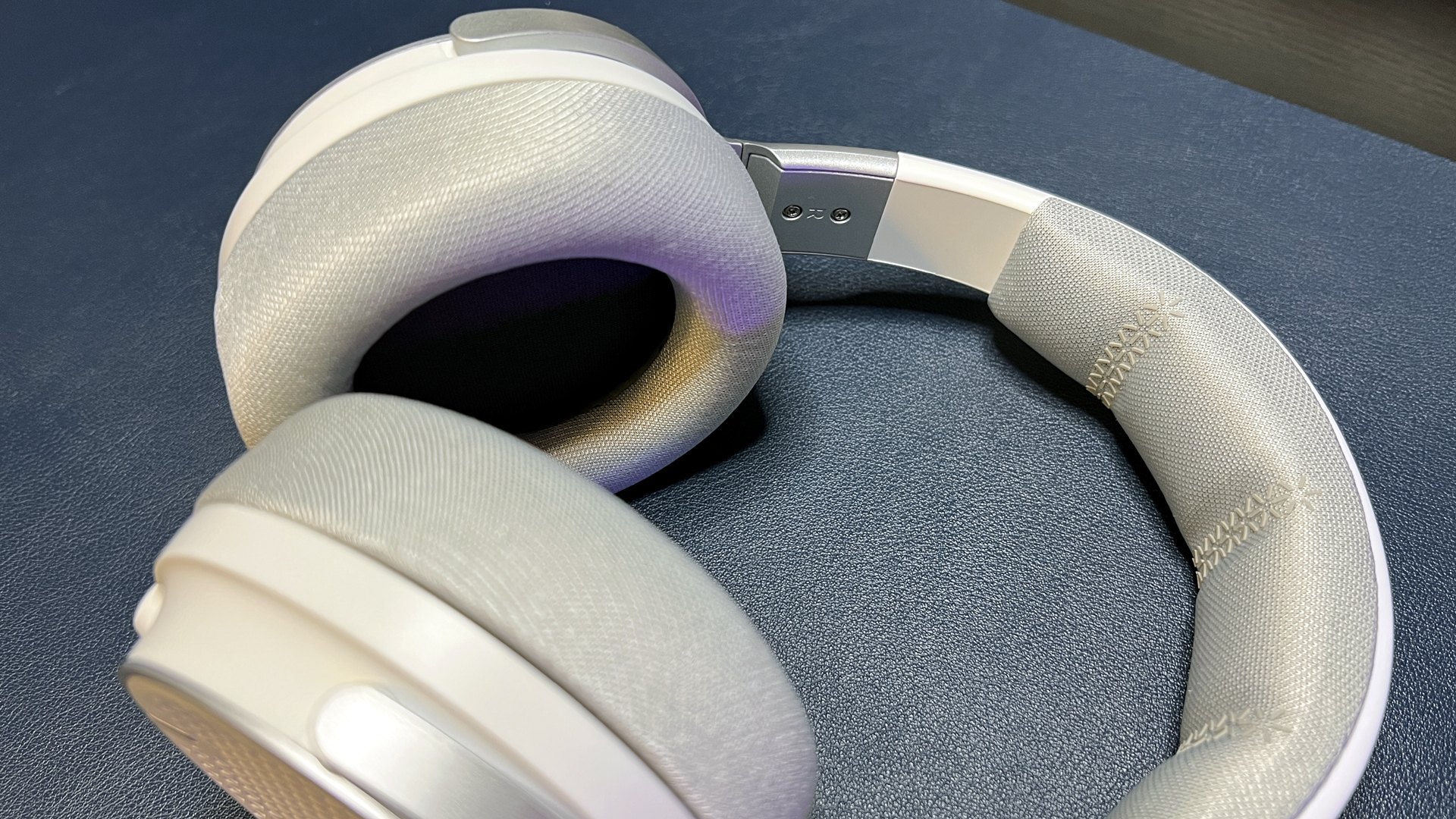
Looks aren’t everything, of course. Cheap-feeling fabric aside, the Virtuoso Pro is actually quite comfortable, especially for a headset of its size. The headset alone weighs 11.92 ounces (338g) — lighter than both the Virtuoso RGB Wireless XT (13.47oz / 382g) and the Virtuoso RGB Wireless SE (12.7oz / 360g), and significantly lighter than the Audeze Maxwell (17.28oz / 490g), which has similarly-sized circular earcups. It’s not the lightest gaming headset you can find, but it’s on the lighter side in general — it’s around the same weight as the Razer Barracuda Pro (12oz / 340g), which we also found to be very comfortable for all-day wear.
The Virtuoso Pro’s headband measures approximately 9.75 inches (247.65mm) long, with 1.25-inch (31.75mm) notched extensions on either side, for a total length of around 12.25 inches (311.15mm) fully extended. The headset has a moderate clamping force: I didn’t feel any discomfort while wearing it for several hours straight, but I also never forgot I was wearing it (to be fair, there are very, very few headsets I’ve forgotten I was wearing, even for a moment). I did feel like the Virtuoso Pro’s clamping force was on the cusp of being too strong — my head is medium-sized (22.25 inches / 565mm in diameter), and I think I would have started feeling some pressure from the headset if my head were any larger.
The large earcups were nice and roomy, with an interior diameter of just under 2.5 inches (63.5mm). And the earpads, which measure about one-inch (25.4mm) thick, were soft — maybe a little too soft, because I could feel my ears grazing the drivers an hour or two in. It didn’t cause any discomfort — not even to my still-healing upper-cartilage piercings — but it does make me a little concerned for future wear-and-tear. According to my coworkers, who for some reason all seem to own Corsair Virtuoso RGB Wireless XT/SE headsets, Corsair doesn’t have the best track record when it comes to ear pad longevity (and the Virtuoso Pro’s feel cheap to begin with). But they are easy to replace, as are most of the other offensively-fabric-covered parts, so maybe we’ll see some premium third-party replacements on the market soon.
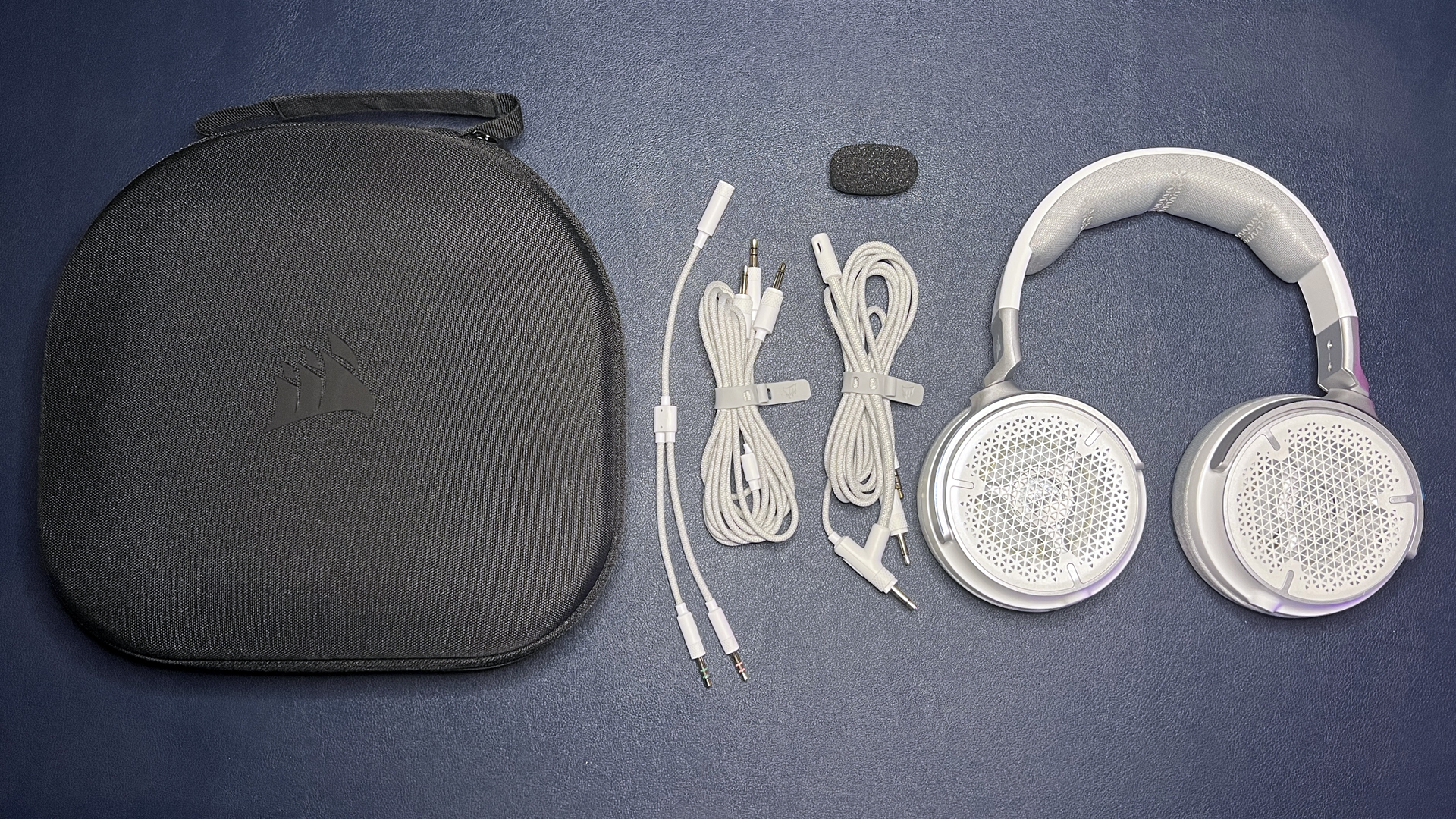
The Virtuoso Pro comes with a handful of accessories, including two braided 6.5-foot(2m) 3.5mm-to-dual-3.5mm audio cables (one with an attached boom microphone, one without) and a 9.5-inch (241mm) y-adapter (for plugging into separate headphone/microphone jacks). It also comes with a rigid, sturdy, zippered travel case, which fits the headset (folded flat) and all of its accessories.
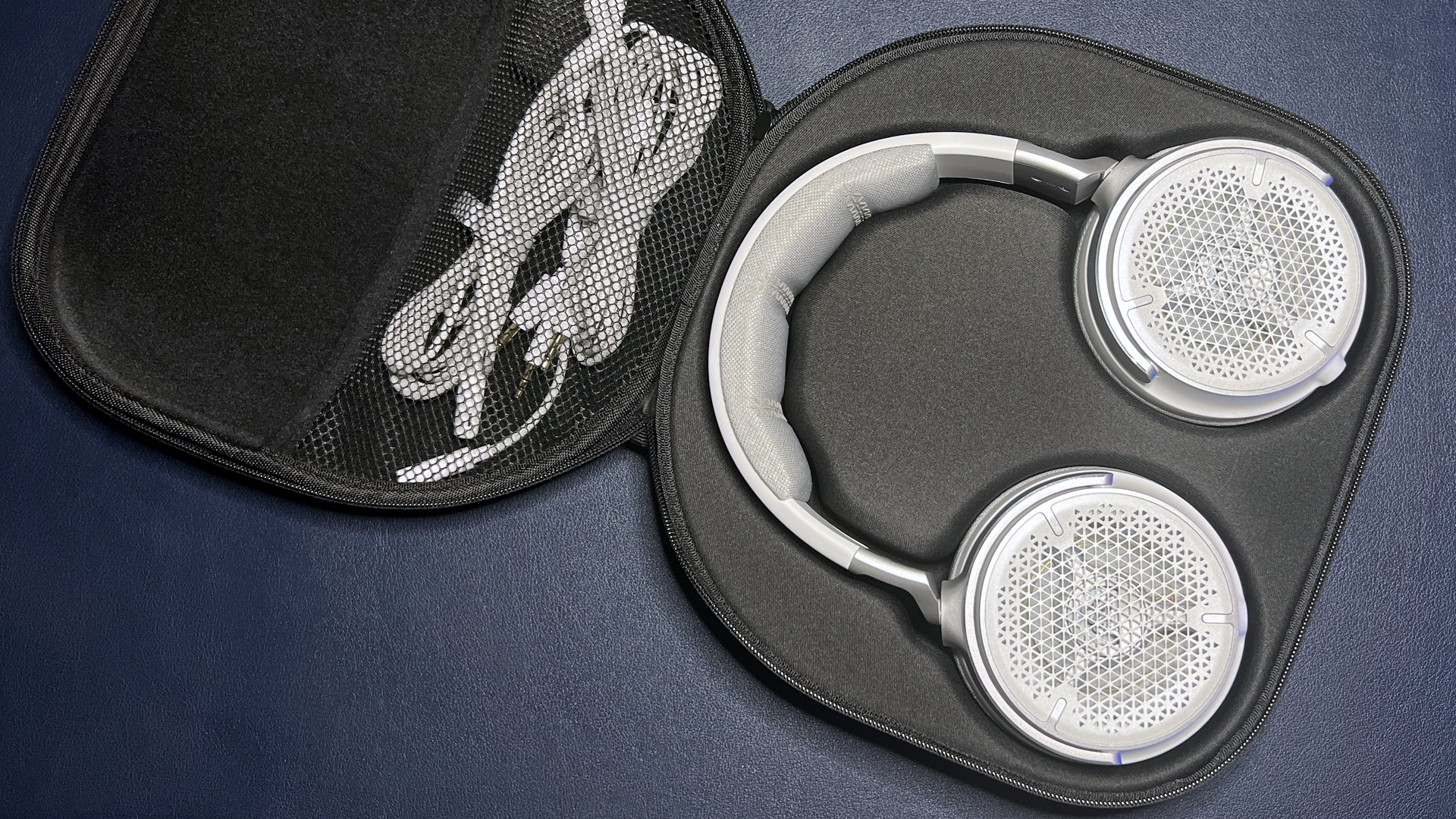
The case is definitely one of the nicer travel cases I’ve seen included with a gaming headset — it’s not quite the heavy-duty, locking case of the Audeze LCD-GX, but it’s on par with the travel case that comes with the Razer Barracuda Pro.
Audio Performance of the Virtuoso Pro
The Virtuoso Pro has 50mm dynamic drivers with a frequency response of 20 Hz - 40,000 Hz — the same frequency response as the drivers in the Virtuoso RGB Wireless XT and the Virtuoso RGB Wireless SE headsets. This is a wider frequency response than you’ll find on most gaming headsets — the average gaming headset usually sticks to the human hearing range of 20 Hz - 20,000 Hz, though we’ve been seeing more and more premium gaming headsets widening their ranges on both ends. SteelSeries’ Arctis Nova Pro Wireless has a frequency range of 10 Hz - 22,000 Hz, but its wired counterpart ups that to 10 Hz - 40,000 Hz. The planar magnetic drivers in Audeze’s wired LCD-GX and wireless Maxwell headsets go even wider — 10 Hz - 50,000 Hz. Even Razer’s new BlackShark V2 Pro (2023) has a wider-than-average 12 Hz - 28,000 Hz frequency response. So, while the Virtuoso Pro’s wide frequency response is still notable, it’s no longer as unique in the gaming headset landscape (and frequency response isn’t the only measure of audio quality).
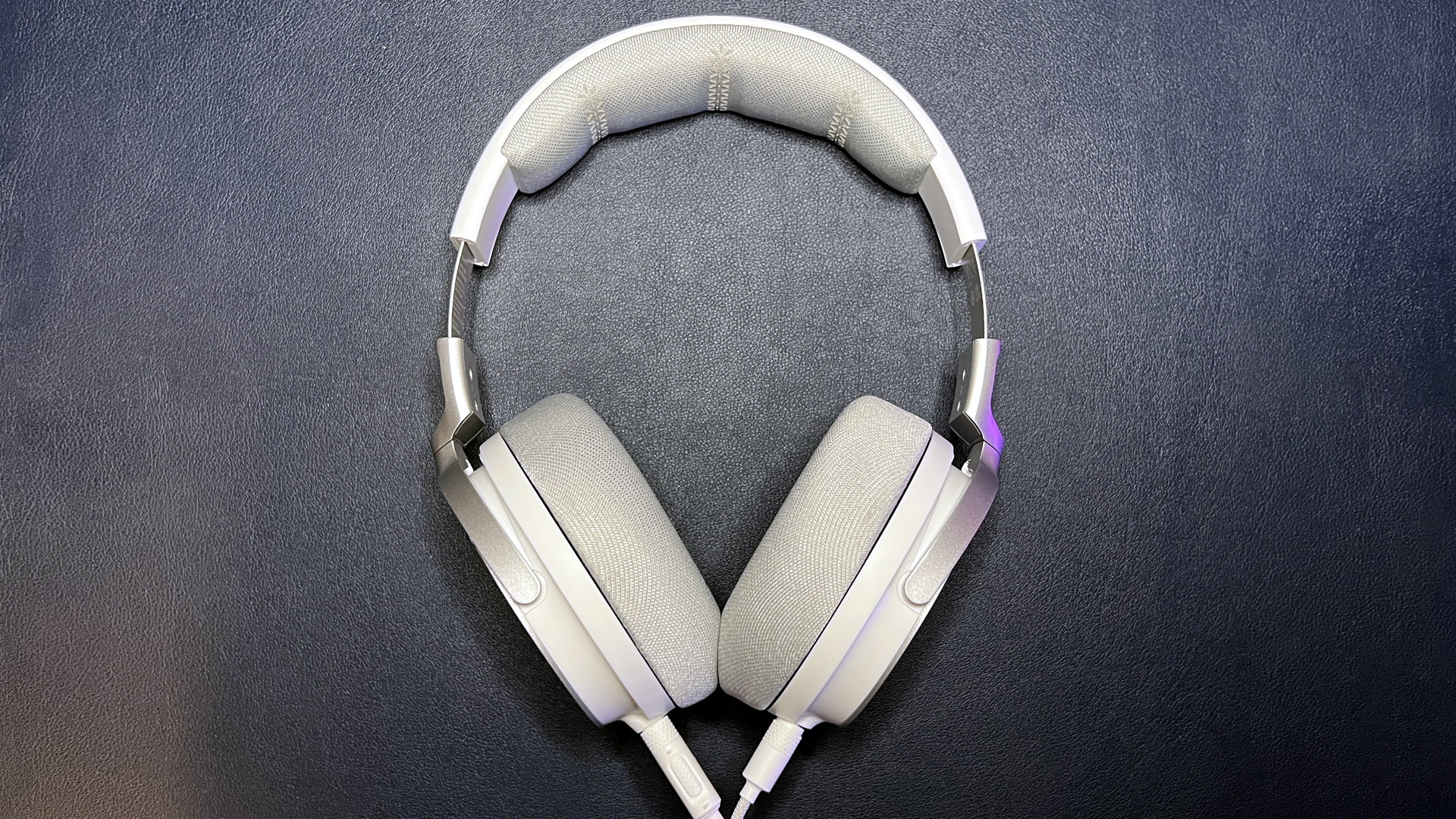
The Virtuoso Pro’s drivers are made of graphene, which is lightweight and extremely rigid — which should mean less distortion and more precise sound reproduction over drivers made of something like, say, titanium. (Logitech’s new G Pro X 2 Lightspeed headset, which launched earlier this year, also has graphene drivers.) The Virtuoso Pro did offer up accurate, detailed sound reproduction in particularly layered tracks like Beyonce’s Single Ladies and Queen’s Bohemian Rhapsody — maybe even a little too sharply detailed on the high end. Lows were present but not terribly powerful in bass-heavy tracks (I test with Kaskade’s POW POW POW, Hans Zimmer’s Time, and Wiz Khalifa’s On My Level (ft. Too $hort), among others).
The Virtuoso Pro has a somewhat restrained but relatively neutral sound profile, especially for a gaming headset. It does especially well with highs/upper mids, but the lower mids sounded a little compressed and the lows lacked that extra oomph. The good news is that highs and upper mids are usually pretty important in a gaming context, and games sounded great on the Virtuoso Pro.
While it’s an analog headset, it has a wide enough soundstage to do directional sound relatively well. I was able to locate footsteps and gunshots fairly accurately in both Overwatch 2 and CS:GO without the help of any software-based virtual surround. Fairly accurately — I wouldn’t necessarily take this headset into a tournament. The headset’s detailed highs and upper mids also helped in noisier games — in Baldur’s Gate 3 (which is unsolicitedly the best PC game I have ever played) the Virtuoso Pro did a fantastic job of reproducing the multi-layered sounds of different environments — footsteps, animal noises, chatter, rustling fabric, creaking buildings, and, of course, rolling dice.
The Virtuoso Pro is an open-back headset, which means the backs of the earcups are open and the drivers are exposed. That said, the Virtuoso Pro didn’t feel all that... open, considering. It had a reasonably wide soundstage (wide enough for “fairly accurate” directional sound), and its design was such that anyone within 15 feet of me could sing along to whatever I was listening to. But if you came along and plopped this headset over my ears without saying anything I would probably guess it was a closed-back headset — music especially sounded intimately close and somewhat isolated to my ears (despite being... not).
While this kind of soundstage intimacy is probably better for certain types of games (e.g. ones with lots of directional audible cues), it’s not what I’m looking for in an open-back headset. It’s not even the size of the soundstage so much as it’s the wider focus — I prefer open-back headsets because closed-back headsets are too intense for me to use while multitasking (I need the open-back transparency or I end up getting overwhelmed and distracted by music). That’s not to say the Virtuoso Pro doesn’t sound good, because it does. It just lacked the open, airy ambience I’m used to feeling in an open-back headset.
Microphone of the Virtuoso Pro
The Virtuoso Pro comes with two cables, similar to the Audeze LCD-GX — one with an attached boom microphone, and one without. The boom microphone is attached to the left audio cable and sits just under the left earcup when plugged in. The microphone — a unidirectional mic with a frequency response of 100 Hz - 10,000 Hz and a sensitivity of -41dB (±3dB) — sits at the end of a flexible 5-inch (127mm) gooseneck arm. There’s also a manual mic mute switch on the joint that connects the left audio cable and the mic arm (again — just under the left earcup).
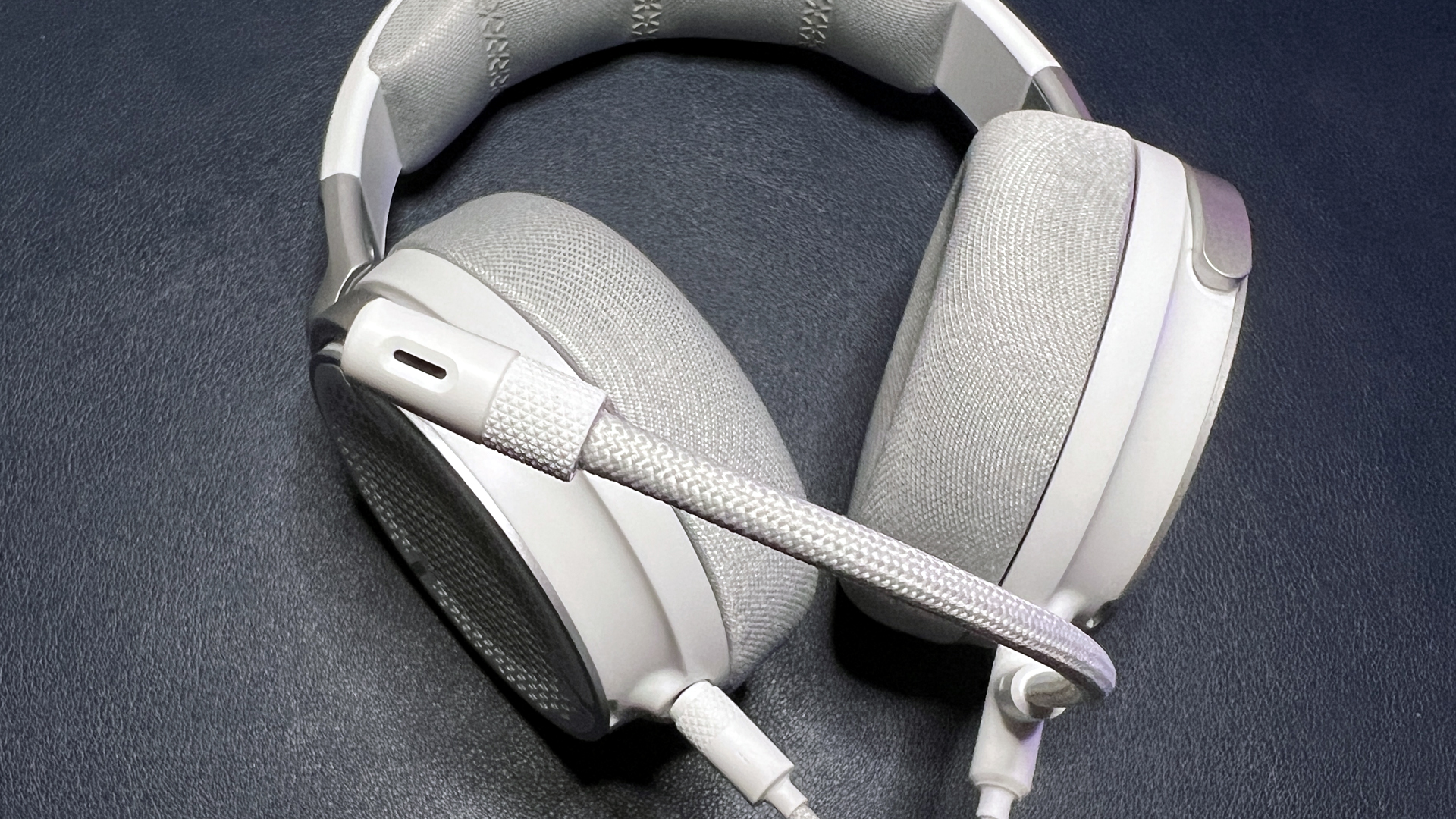
The microphone sounded very good, with more of that broadcast quality you don’t often see in headset mics, but I did have a little trouble getting it to pick up enough volume. My friends and colleagues said I sounded pretty quiet in video chats, even though I’m a very loud speaker and the mic was less than an inch from my mouth (and the mic did tend to pick up plosives when it was that close to my mouth — as you might expect). I’m sure this could be easily fixed with some gain-increasing software. The plus side of the mic not picking up enough overall volume was that it definitely didn’t pick up any of my PC fan noise in the background. However, it doesn’t have any built-in noise cancellation other than being unidirectional, so louder background noises (typing, talking, dogs barking) were still distantly audible.
Bottom Line
The Corsair Virtuoso Pro is Corsair’s first open-back gaming headset, and it sounds very good — excellent highs, solid mids, and present but not-super-powerful bass, detailed audio reproduction, and fairly accurate directional sound. It comes with a rigid travel case and two detachable audio cables, and the detachable boom microphone also sounds good (it’s just a little quiet).
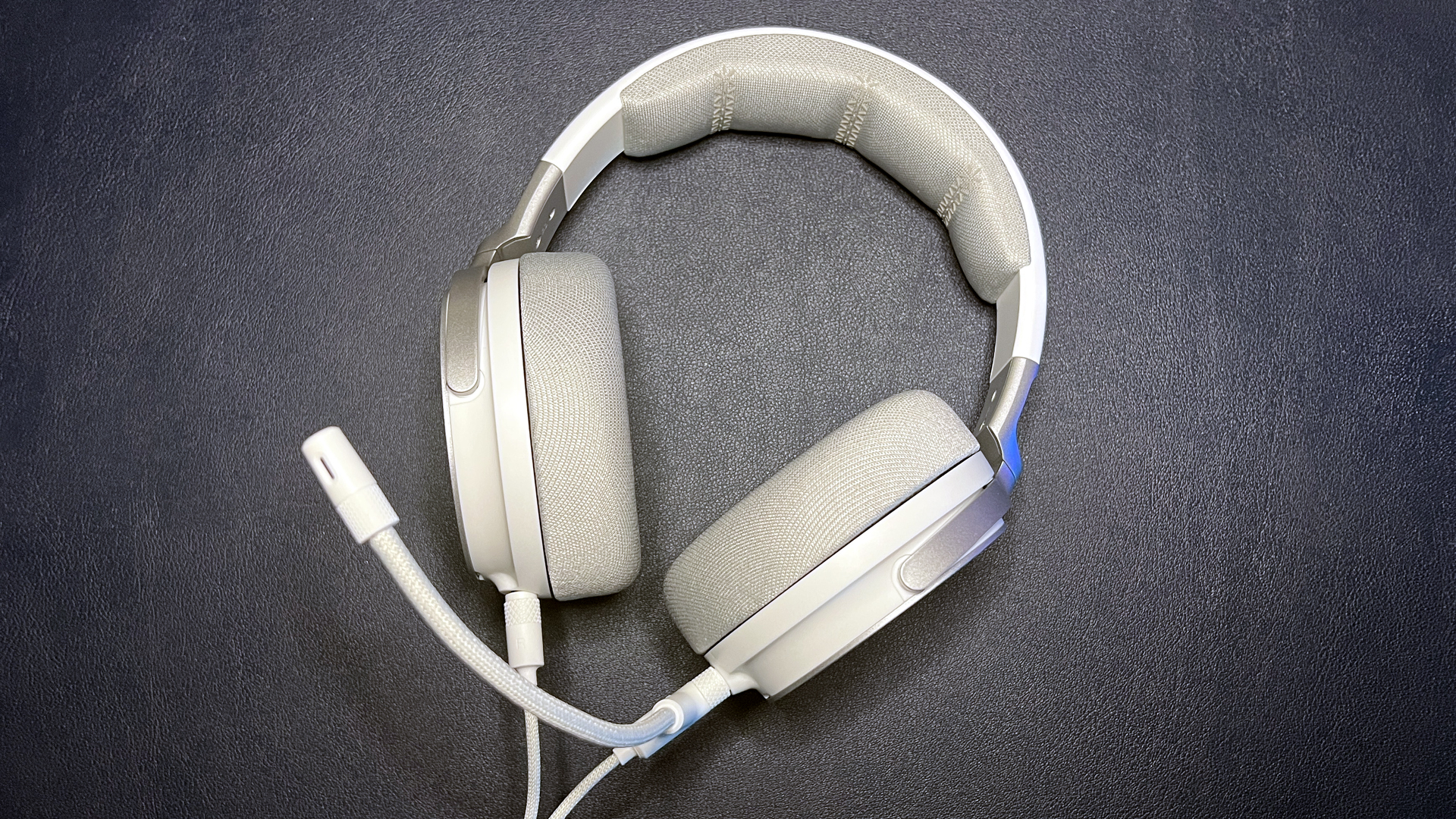
The Virtuoso Pro sounds good for its $200 price point — better than many pricier gaming headsets. But it’s also analog, and a pretty stripped-down analog at that — there are no controls on the headset, not even a volume wheel. The mic sounds good, feels solid, and has an intuitive, easy-to-use manual mute switch, but it’s not exactly convenient to switch audio cables every time you want to stash your mic. Also, while I didn’t find the Virtuoso Pro to be as “open” as I like for an open-back headset, it is at least open enough that it will leak sound to your neighbors, so it’s not the best option for anyone who shares a space.
If you’re looking for a neutral sound profile that’s light on bass, the Virtuoso Pro is worth checking out. But if you’re looking for a good gaming headset, something like the Razer BlackShark V2 Pro (2023) is similarly-priced, wireless, comfortable, and is stuffed with gaming features.
MORE: Best Gaming Keyboards
MORE: How to Pick Keycaps for Your Mechanical Keyboard
MORE: How to Build a Custom Mechanical Keyboard

Sarah Jacobsson Purewal is a senior editor at Tom's Hardware covering peripherals, software, and custom builds. You can find more of her work in PCWorld, Macworld, TechHive, CNET, Gizmodo, Tom's Guide, PC Gamer, Men's Health, Men's Fitness, SHAPE, Cosmopolitan, and just about everywhere else.
